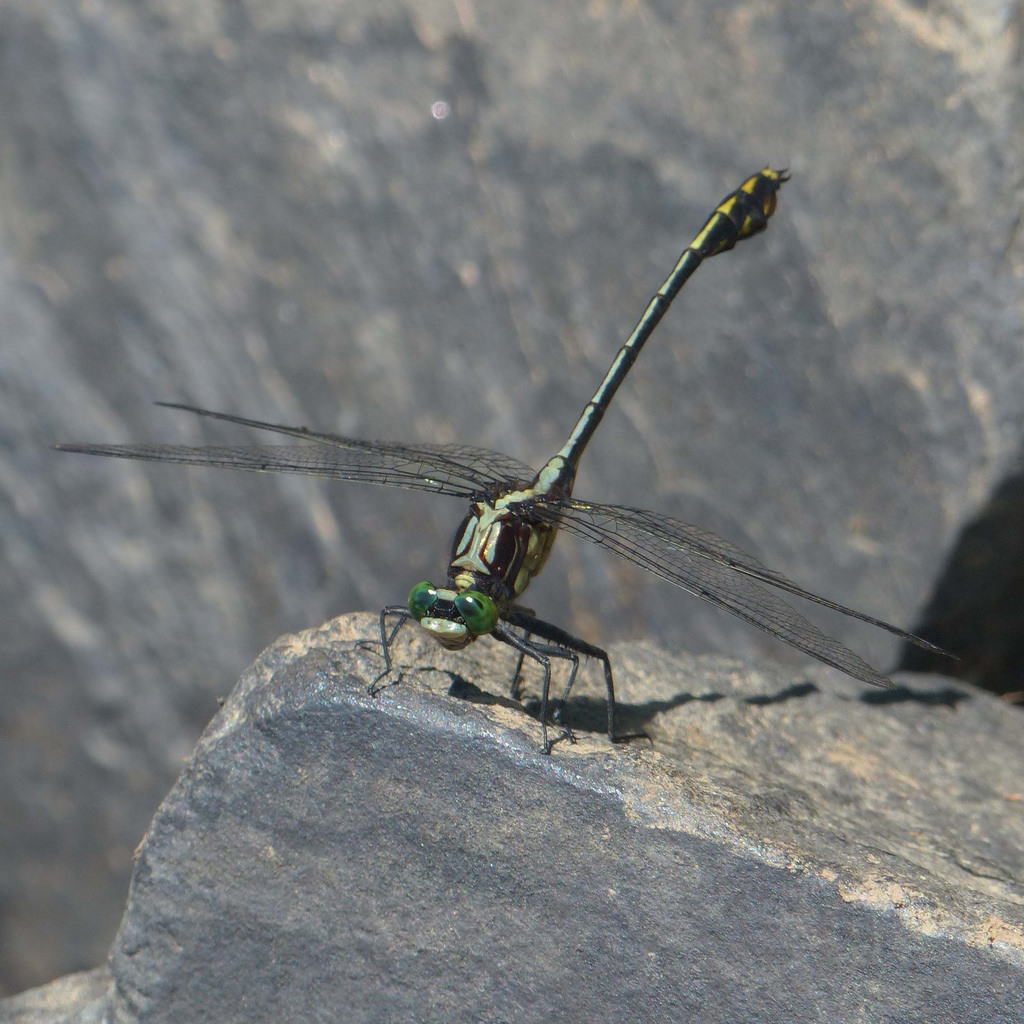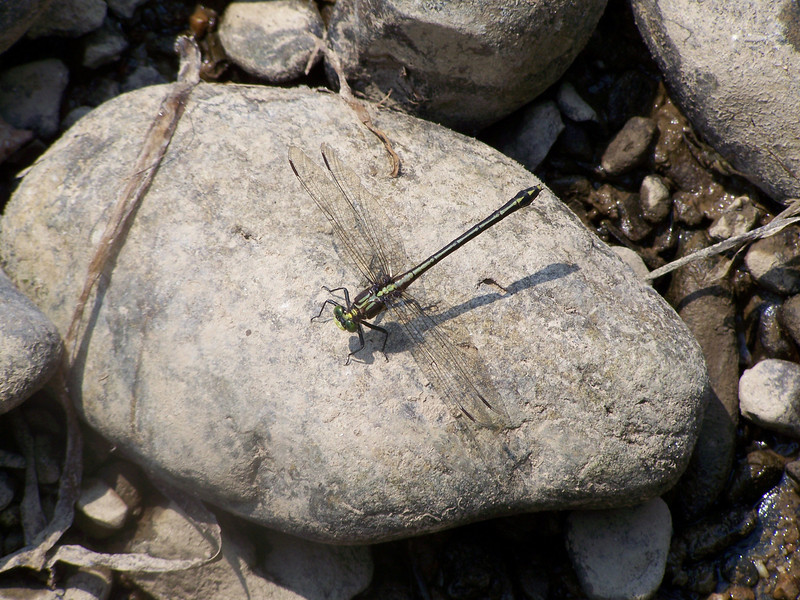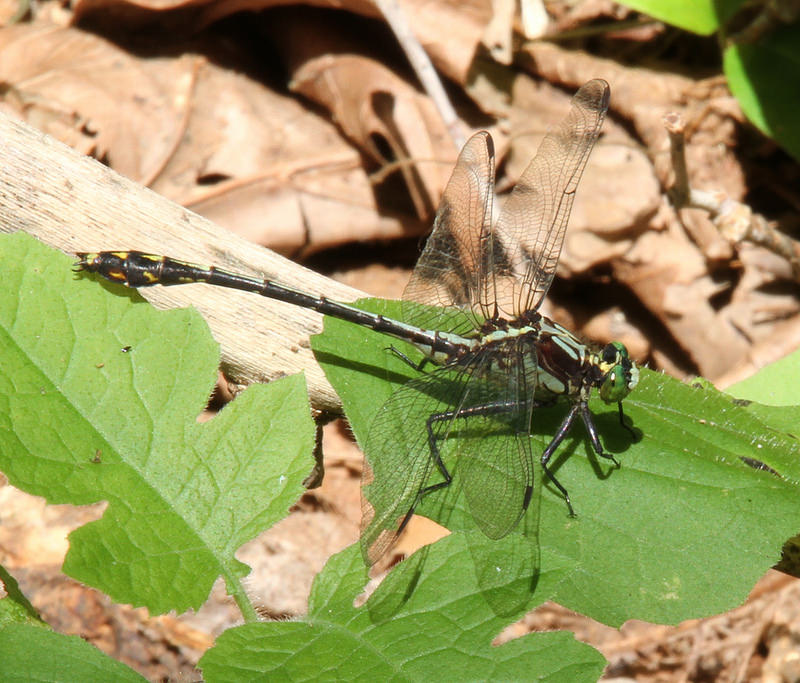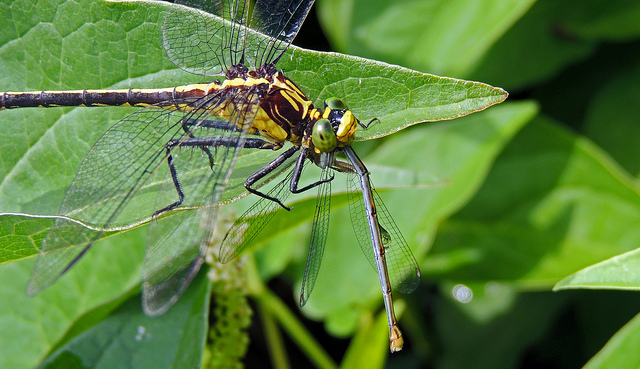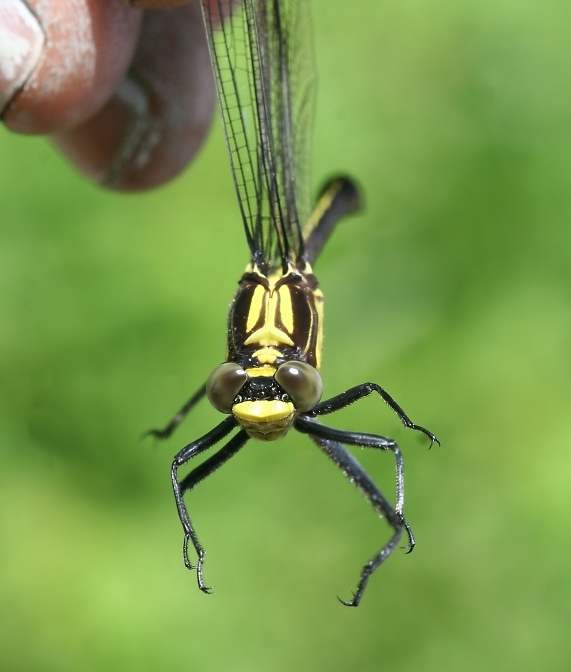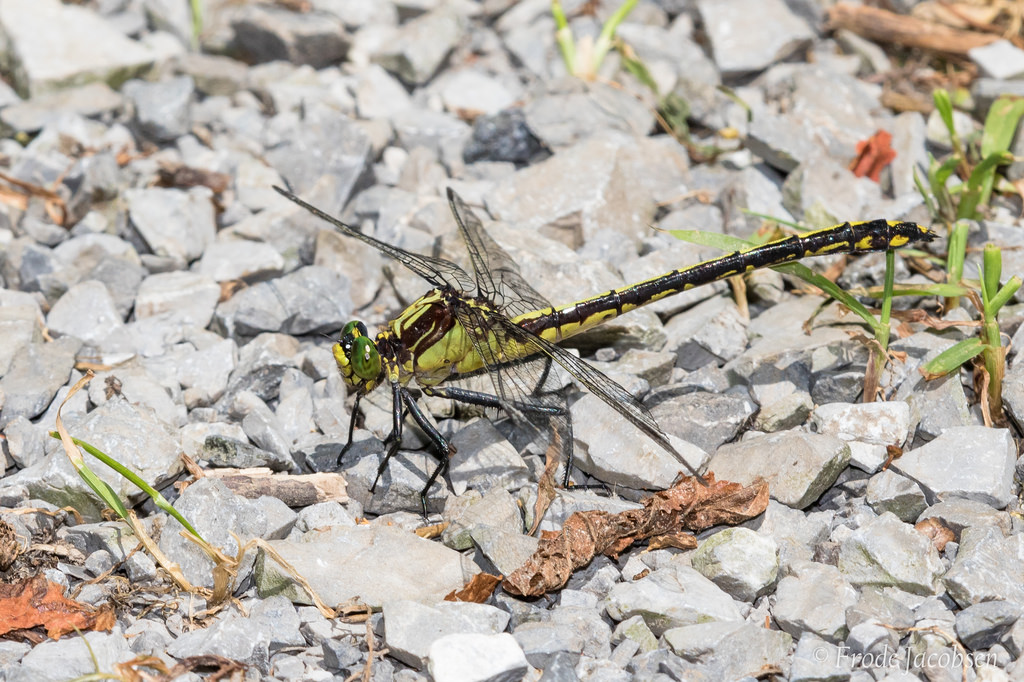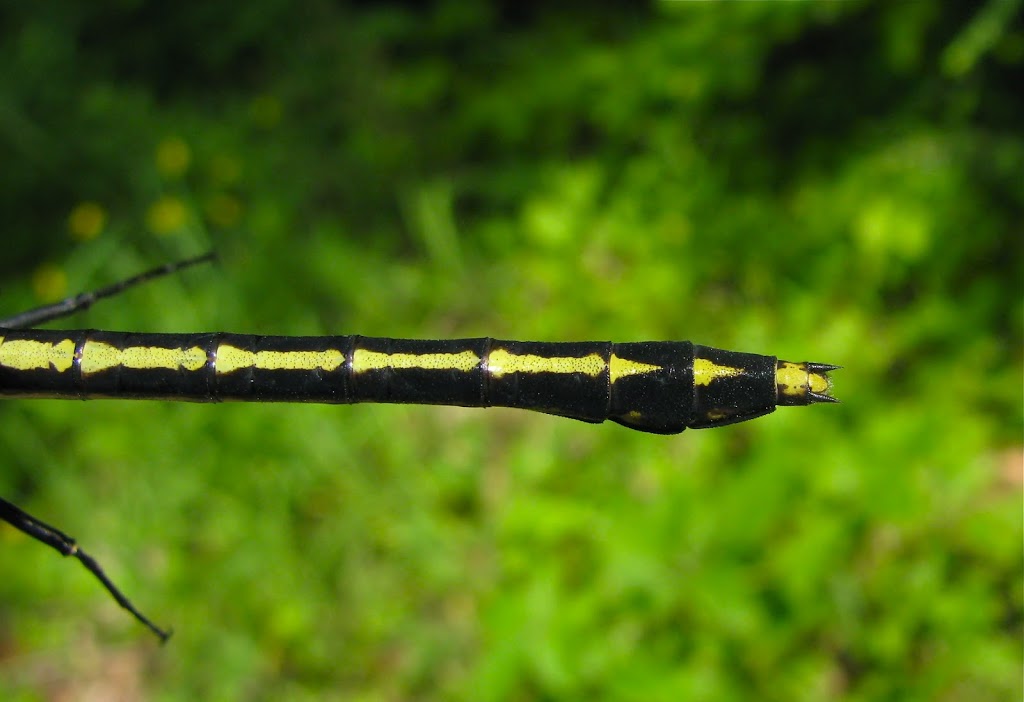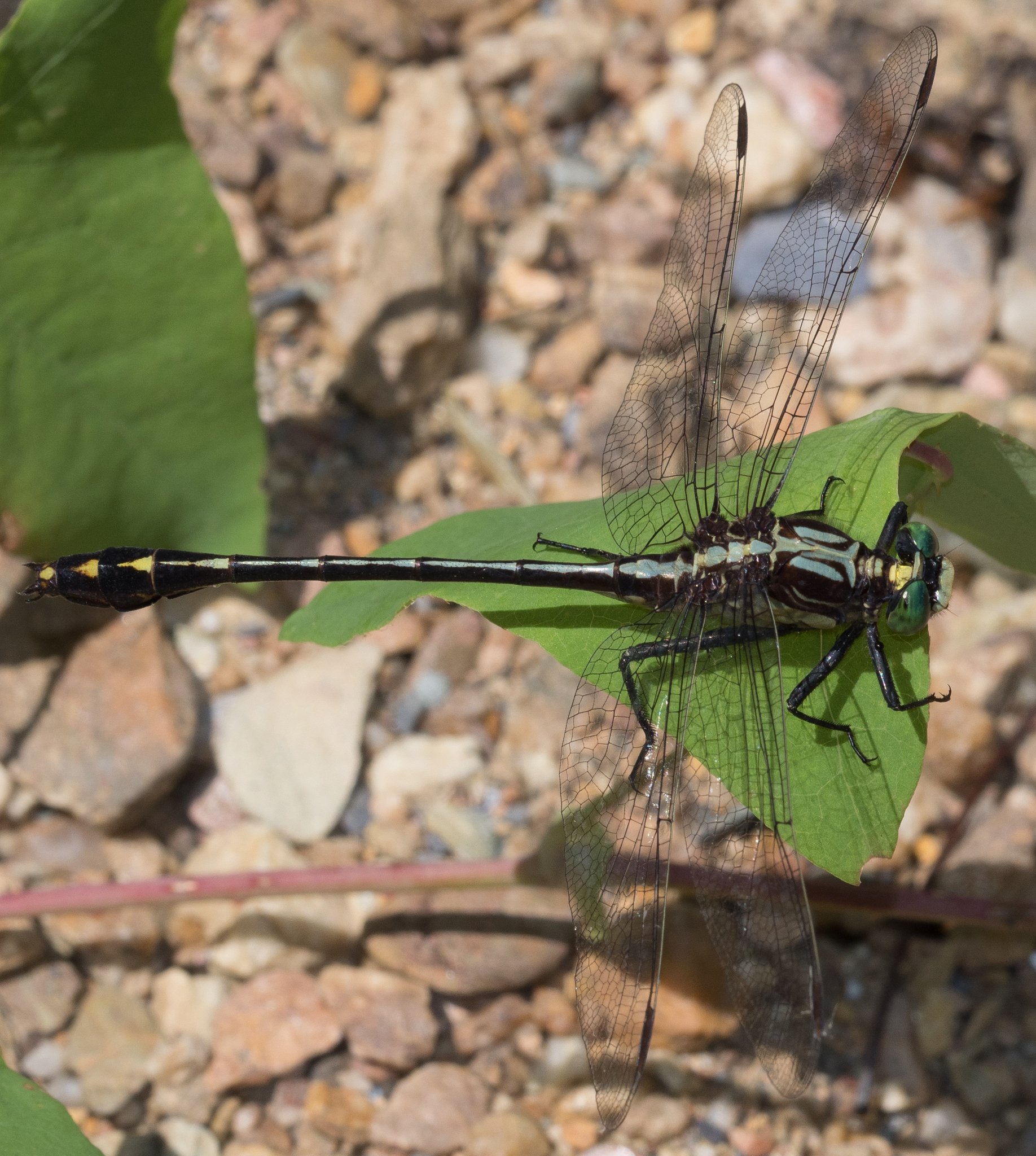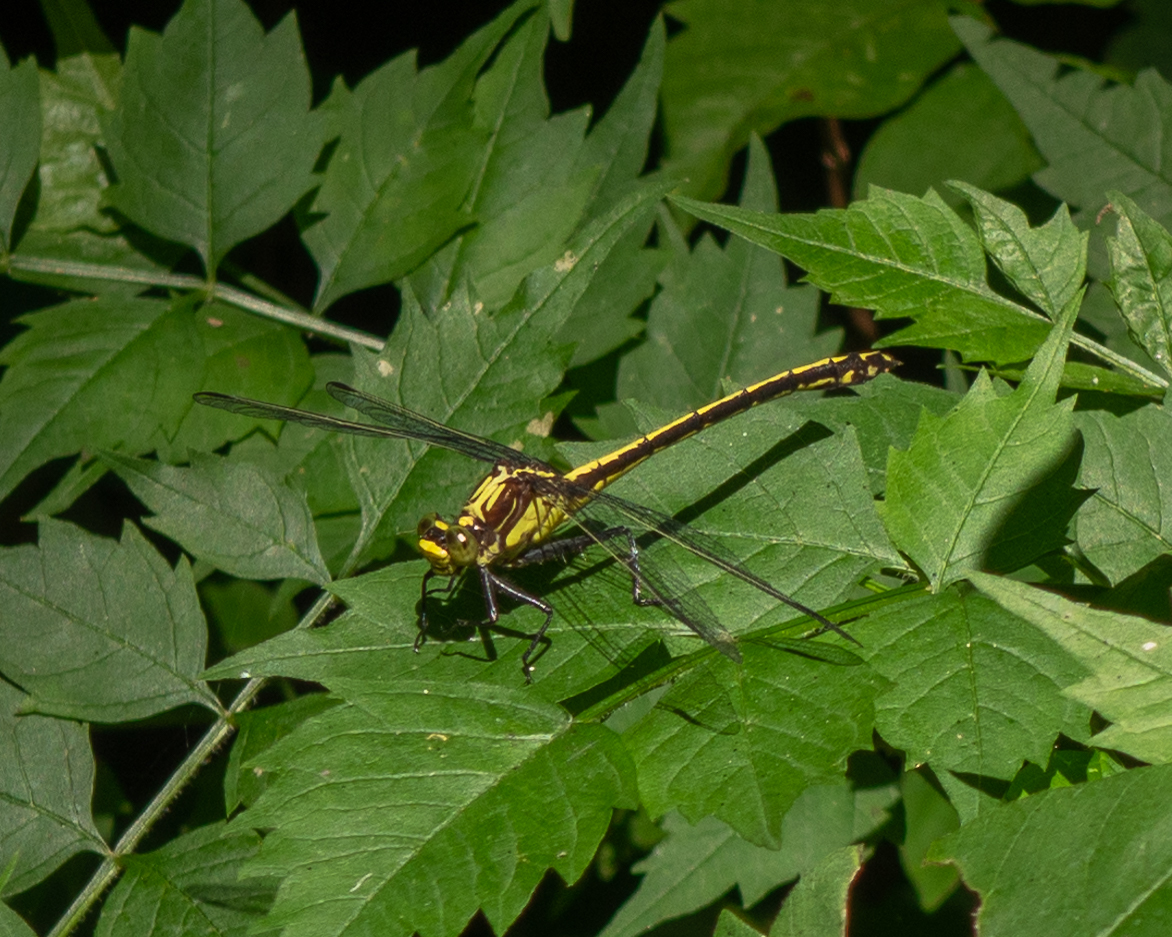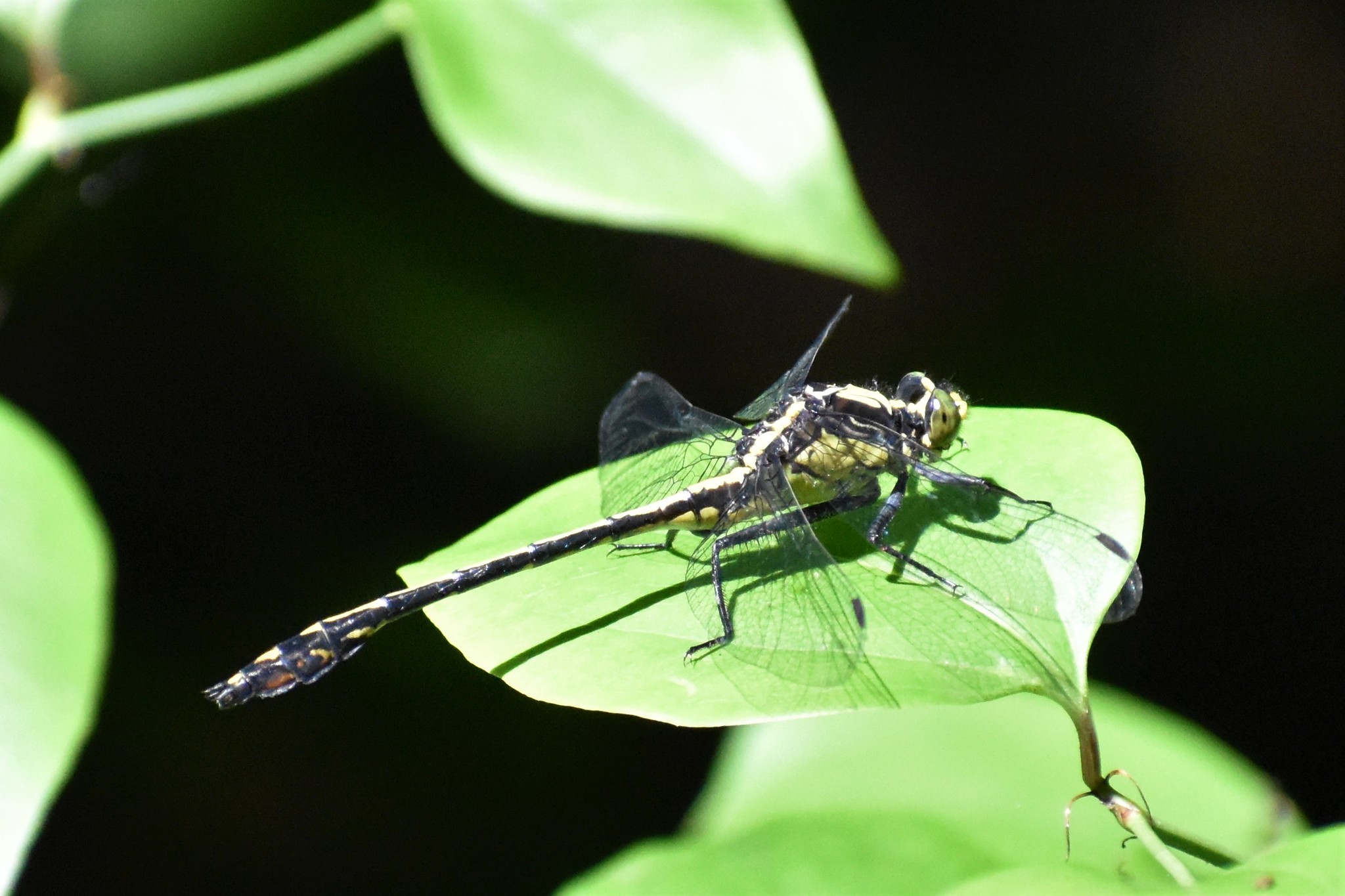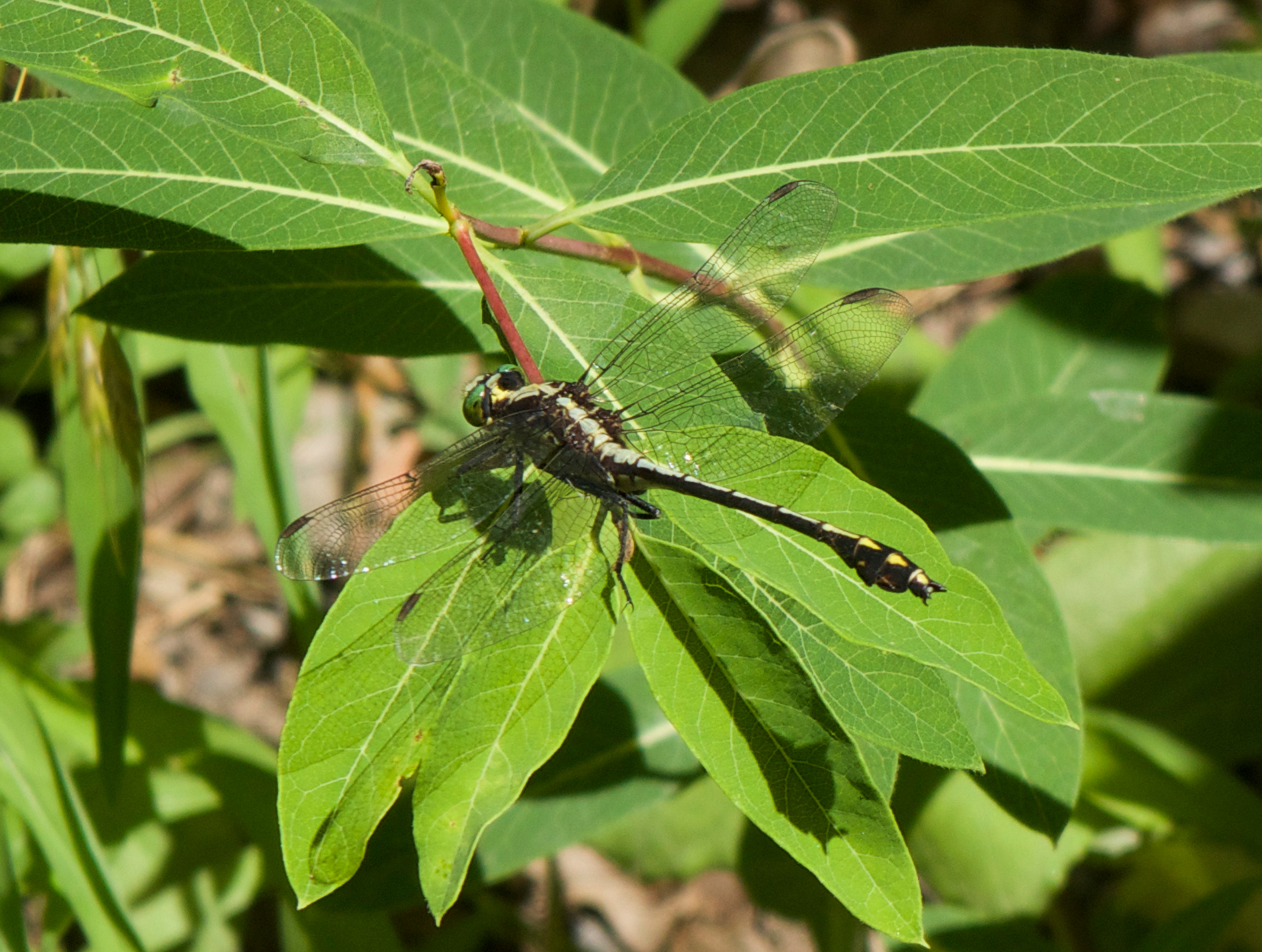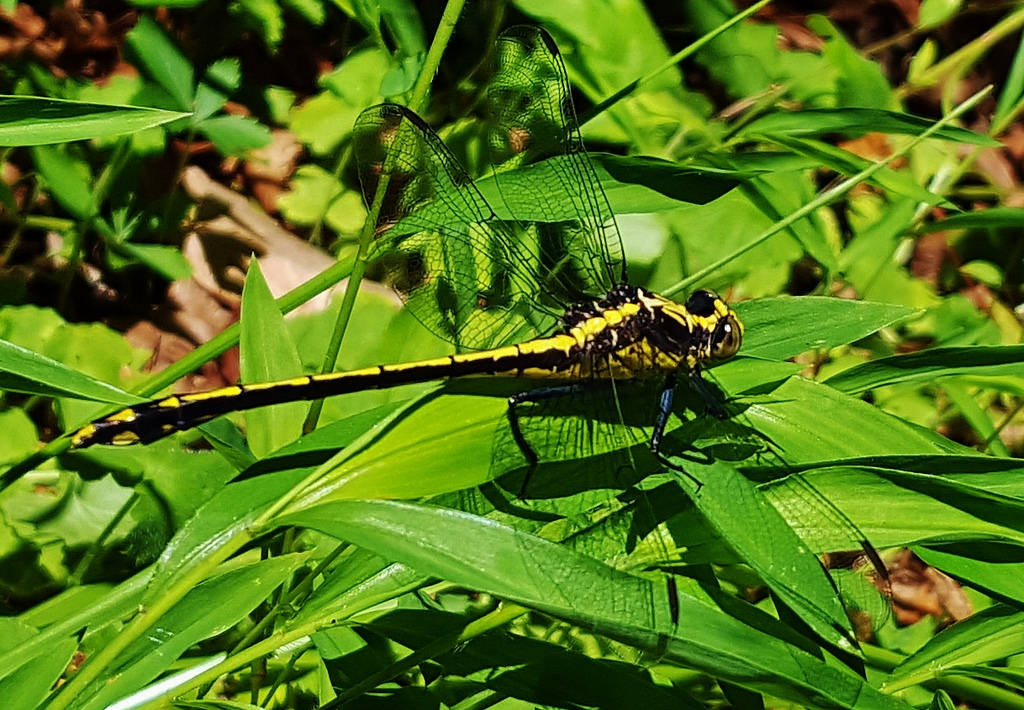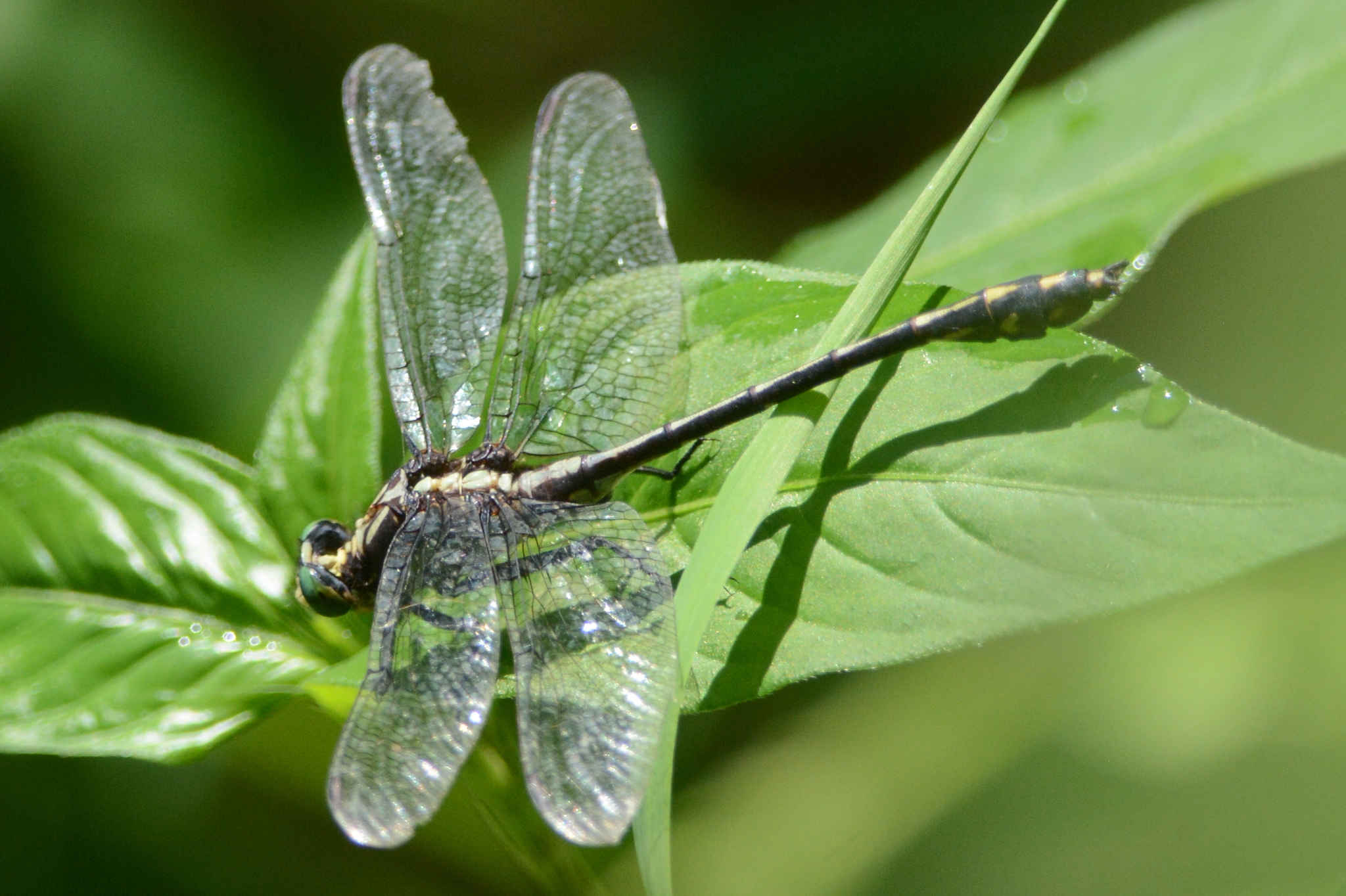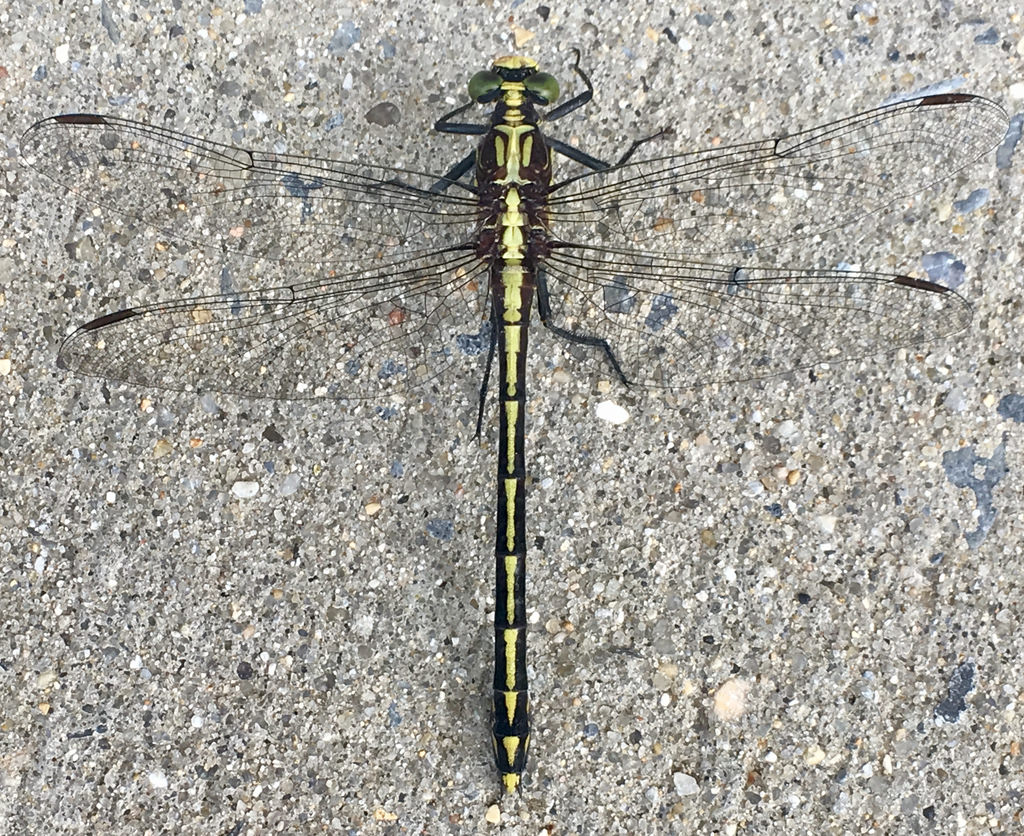Map Snapshot




















347 Records
Status
Black-shouldered Spinyleg (Dromogomphus spinosus) is a large clubtail species with long hind legs. The femurs have prominent spines, which probably help in capturing large prey items. This clubtail breeds in a wide range of rivers and creeks, with mud or rocky substrate, and sometimes will even utilize lakes (Paulson, 2011). This species appears to tolerate some degree of degraded water quality (B. Coulter, pers. obs.). In Maryland, this dragonfly has been recorded across nearly the entire state, with the exception of several coastal plain counties. It is considered common in the state (Richard Orr's The Dragonflies and Damselflies of Maryland and the District of Columbia).
Seasonality Snapshot
Source: Wikipedia
| Dromogomphus spinosus | |
|---|---|

| |
| Rideau River, Ontario | |
| Scientific classification | |
| Domain: | Eukaryota |
| Kingdom: | Animalia |
| Phylum: | Arthropoda |
| Class: | Insecta |
| Order: | Odonata |
| Infraorder: | Anisoptera |
| Family: | Gomphidae |
| Genus: | Dromogomphus |
| Species: | D. spinosus
|
| Binomial name | |
| Dromogomphus spinosus Selys, 1854
| |
Dromogomphus spinosus, the black-shouldered spinyleg, is a species of dragonflies in the family Gomphidae.
Like other spinylegs, D. spinosus have long spines on their legs that help in the capture of prey.[2] True to their name their shoulders are black. The dorsal thorax has a light green I-shaped mark with pale ovals on either side. Their flight time is between late May and early September from southern Manitoba to the east coast of the US as far south as Florida.[2][3] Terminal segments form a club with yellow lateral markings.[3] Adults average 2.5 in (64 mm).[2]
References
[edit]- ^ Paulson, D. R. (2017). "Dromogomphus spinosus". IUCN Red List of Threatened Species. 2017: e.T165089A65832350. doi:10.2305/IUCN.UK.2017-3.RLTS.T165089A65832350.en. Retrieved 4 January 2024.
- ^ a b c Mead, Kurt. (2009) Dragonflies of the North Woods. Duluth, MN:Kollath+Stensaas.
- ^ a b Dunkle, Sidney W. (2000) Dragonflies through Binoculars. New York:Oxford University Press. p 95-6.
_via_inaturalist_inat_1575096447-607a5452016a3.jpg)
